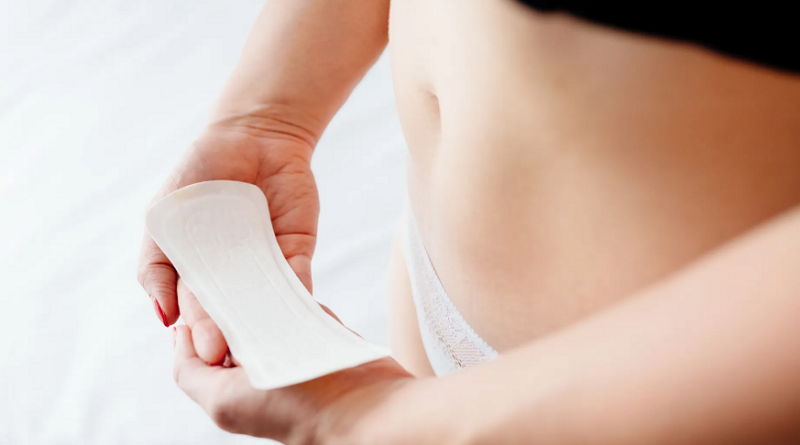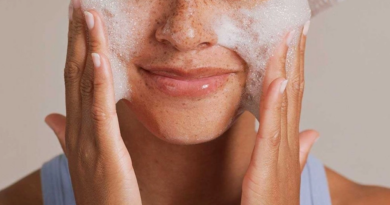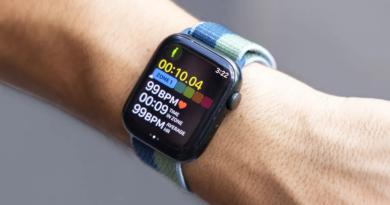Menopause Made Easier: A Holistic & Tech-Savvy Guide
Are you looking for ways to feel more balanced and informed as you move through menopause? Have you ever wondered if there are digital tools that can simplify this transition? Does it sometimes seem like all the advice focuses on the same few solutions, leaving out the small yet significant details that might make your life easier?
If you’ve had these questions, you’re not alone. Every woman experiences menopause differently. But no matter how diverse individual journeys may be, there are specific, practical ways to navigate menopause—some methods are old and trusted, while others are incredibly modern. Below, we’ll dig into these holistic and tech-driven approaches. By the end of this in-depth guide, you’ll have fresh ideas to improve your quality of life during menopause.
Table of Contents
1. Understanding Menopause Without the History Lesson
Typically, articles about menopause start with a walk through centuries-old treatments or historical anecdotes. Let’s skip that. What matters is that menopause isn’t just a single event—it’s a multi-stage process encompassing perimenopause, menopause, and postmenopause.
- Perimenopause: Your body starts producing less estrogen. Irregular cycles and symptoms like mood shifts can appear.
- Menopause: The official “point” you reach 12 months after your last menstrual period.
- Postmenopause: After that 12-month mark, you’re considered postmenopausal. Hormone levels eventually stabilize, but that doesn’t always mean all symptoms vanish.
Why does this matter? Because knowing the stages helps you pinpoint where you are, what changes to expect, and how to tailor solutions to your specific hormonal landscape.
2. Symptoms and Why They’re Often Misunderstood
You’ve likely heard about hot flashes and night sweats. But did you know that menopause can also affect your skin sensitivity, your sense of taste, and even how your body distributes weight? These lesser-known details can be confusing if you’re not prepared for them.
Common Symptoms
- Hot Flashes: The classic rush of heat that can leave you sweating.
- Night Sweats: Hot flashes that happen at night, often interrupting your sleep.
- Mood Swings: Fluctuations in hormone levels can influence your emotional balance.
- Vaginal Dryness: Reduced estrogen can thin and dry out vaginal tissues, leading to discomfort.
- Sleep Disruptions: Insomnia or fragmented sleep often comes with hormonal changes.
Lesser-Known Symptoms
- Tingling Sensations: Some women experience tingling or prickling in their extremities.
- Changes in Taste: Certain foods may suddenly seem overly bitter or sweet.
- Skin Sensitivity: Some notice itchiness or a sensation akin to “skin crawling.”
- Hair Thinning or Loss: Yes, scalp hair can thin, but you might find more hair growth on the face.
Why are these symptoms frequently misunderstood or downplayed? Because they aren’t always as obvious as hot flashes. They might also show up at unpredictable times, making it tough to link them directly to menopause. Checking in with healthcare professionals and referencing reliable data (for example, The North American Menopause Society [1]) can help you confirm if your experiences align with known menopausal patterns.
3. Hormonal Changes: A Closer Look
Hormone changes aren’t just about lower levels of estrogen. Progesterone and testosterone can also shift. When estrogen fluctuates, it may:
- Influence your blood vessels, leading to temperature spikes (hot flashes).
- Affect your nervous system, which can increase anxiety or mood swings.
- Impair your serotonin production, influencing your emotional state.
- Modify your bone density, making it crucial to pay attention to calcium intake.
Meanwhile, changes in testosterone can impact your libido and muscle mass. “That explains why I’m suddenly more tired after a workout,” you might think. Yes, it could be connected to testosterone shifts. It’s not just an estrogen story.
Progesterone also plays a role in regulating sleep and mood, so any dips or imbalances might explain new sleep disturbances or mood changes. This is why it’s valuable to get a comprehensive hormone panel test if you suspect that your shifting hormones are at the root of new or worsening symptoms.
4. Lifestyle Factors that Can Make or Break Your Experience
Have you wondered if your daily habits make menopause symptoms better or worse? The simple answer is yes. While hormones are key players, your lifestyle can either amplify or reduce symptom severity.
Diet
- Focus on Protein: Lean sources like fish, poultry, beans, or lentils can stabilize blood sugar and promote muscle maintenance.
- Healthy Fats: Foods like avocados, nuts, and seeds contain omega-3 fatty acids, which can support cardiovascular health.
- Phytoestrogens: Products like soy, flaxseed, and lentils contain compounds that mimic estrogen in the body. Some women find these beneficial, while others do not see a significant change. It’s worth experimenting mindfully.
- Calcium & Vitamin D: Strong bones matter. Calcium-rich foods (dairy, fortified almond milk, leafy greens) and vitamin D from sunlight or supplements can help maintain bone density.
- Hydration: A drop in estrogen can lead to dryness in multiple body systems. Water intake becomes even more critical.
Exercise
- Cardiovascular Workouts: Activities like brisk walking, cycling, or swimming promote heart health and help control weight gain.
- Strength Training: Weight-bearing exercises build bone density and muscle mass. Even simple routines using resistance bands or light dumbbells can make a difference.
- Low-Impact Movements: Pilates or yoga can improve flexibility and reduce stress on joints.
Sleep Hygiene
- Cool Bedroom Temperature: This can counteract night sweats.
- Limit Evening Stimulants: Caffeine or sugary foods can worsen insomnia.
- Routine: A set bedtime and wake-up time trains your body to maintain regular sleep cycles.
Stress Management
- Mindfulness Exercises: Guided meditation apps or short breathing exercises can calm your mind.
- Nature Walks: Just 20 minutes outside can lower stress hormones.
- Creative Outlets: Painting, journaling, or crafting let you process emotions in a therapeutic way.
Many reputable institutions, including the Mayo Clinic [2], emphasize the link between lifestyle modifications and menopause symptom relief. Start small, track your progress, and notice if certain changes cause improvements or setbacks.
5. Holistic Approaches to Menopause
When you hear the word “holistic,” you might think of traditional remedies that have been handed down for generations. While some of these are common, others are rarely mentioned. Here’s a rundown of lesser-known and commonly cited holistic measures:
Herbal Remedies
- Black Cohosh: Often used to relieve hot flashes. However, while some studies suggest benefits, others say the results are inconclusive. Always read product labels and consider consulting a healthcare professional to confirm safety.
- Red Clover: Contains isoflavones, which might act like estrogen in the body. Some women notice reduced hot flashes.
- Evening Primrose Oil: Known for its gamma-linolenic acid content, it can help balance hormones.
Mind-Body Techniques
- Yoga Nidra: This form of guided relaxation isn’t just about yoga poses. It’s a deeply meditative practice that can ease stress, promote deeper sleep, and support hormonal balance.
- Acupuncture: Some women find relief from hot flashes and emotional imbalances through acupuncture treatments. Though the research is mixed, anecdotal evidence and some clinical trials suggest it helps certain individuals.
Aromatherapy
- Essential Oils: Lavender, geranium, and clary sage may lessen stress, improve mood, or help with mild hot flashes. Some women like to diffuse these oils or add a few drops to their evening bath.
Supplements for Sleep and Mood
- Magnesium: Known for its calming effect. Many find it useful for improving sleep quality.
- Vitamin B Complex: B vitamins support energy metabolism and neurological function. They can be critical if you’re dealing with mood fluctuations.
Do any of these sound intriguing? If you’re curious, you might start by adding a single herbal remedy or supplement to your routine to assess how it affects you. Overloading on multiple new treatments at once can muddy the waters.
6. The Role of Technology in Menopause Management
Have you ever thought about using an app to track your hot flashes or wearable tech to check hormone levels? Technology has evolved far beyond basic fertility-tracking apps. Let’s look at some tech-driven solutions designed with menopause in mind.
Menopause Tracking Apps
- Hot Flash Journals: Several apps let you log hot flashes, noting the time of day, severity, possible triggers, and relief strategies. Over time, patterns emerge, allowing you to minimize triggers.
- Mood & Symptom Trackers: Some women find it helpful to track mood swings and energy levels. Correlating this data with dietary changes or exercise habits can reveal hidden connections.
Wearable Devices
- Smart Rings and Wristbands: These devices track metrics such as body temperature, sleep quality, and heart rate variability. You might discover trends that align with hormonal shifts—perhaps your sleep is lighter on days following severe night sweats.
- Continuous Glucose Monitors (CGMs): Though originally designed for diabetes management, some perimenopausal women use CGMs to understand how hormonal changes affect blood sugar and cravings.
Virtual Support Communities
- Online Forums: Places like Reddit or specialized menopause communities can provide moral support, tips, and real-life stories. Some members share insights on emerging treatments or new tech tools.
- Telehealth Services: Healthcare professionals specializing in menopause are available through video calls. From home, you can discuss your symptoms and lab results without traveling to a clinic.
Digital Therapy Platforms
- Guided Meditation Apps: Perfect for stress management, these apps offer quick sessions you can do in a lunch break. Reducing chronic stress might help soften the blow of sudden hormonal dips.
- Cognitive Behavioral Therapy (CBT) Online: CBT techniques can shift how you respond to hot flashes or mood swings. Some women report fewer symptoms when they have better coping strategies.
If you’re exploring new tech for menopause, check whether the developers or sponsors cite well-known medical experts. Reputable sources, peer-reviewed studies, and transparent privacy practices all point to a trustworthy solution.
7. Combining Tech with Traditional Methods
Ever considered pairing a new menopause-tracking app with an age-old remedy like Black Cohosh tea? Technology and traditional remedies don’t have to exist in separate worlds. They can complement each other seamlessly.
- Tracking Herbal Efficacy: If you start an herbal supplement, log your symptoms in an app. After a few weeks, you might see if that supplement really helps.
- Real-Time Alerts: Some wearables can send push notifications for stress spikes, reminding you to practice breathing exercises. This can be especially handy if you’re also exploring holistic methods like aromatherapy.
- Tailored Wellness Plans: If you’re working with a healthcare provider, they might interpret your wearable data alongside hormone test results. This “all-in-one” view can lead to a more personalized plan.
Still skeptical? It’s entirely normal to question whether technology truly enhances holistic care. The key is to find a balance that feels right for you. For instance, you might enjoy a daily yoga practice paired with a smartwatch that monitors your heart rate. This blend of mind-body healing and digital feedback can give you both immediate calm and long-term data.
8. Practical Tips for Everyday Life
Let’s get down to daily actions you can start right now. Ready?
Hot Flash Hacks
- Layer Your Clothing: Keep a lightweight cardigan or shawl handy so you can remove layers when a hot flash hits.
- Stay Hydrated: Water, herbal teas, or even flavored seltzers help you regulate body temperature.
- Spot Check Your Diet: Spicy foods, caffeinated drinks, or alcohol can trigger hot flashes. It might help to avoid or reduce these.
Sleep Solutions
- Cooling Mattress Covers: Some are made with materials designed to draw heat away from your body.
- Bedtime Rituals: A calming routine—like reading for 10 minutes—prepares your brain for sleep.
- Electronic Shutdown: Turn off screens 30 minutes before bed to reduce blue light exposure.
Emotional Well-Being
- Talk It Out: Regular chats with friends, a partner, or a counselor can offer relief.
- Create a “Calm Corner”: A spot in your home with soft lighting, cozy pillows, or an essential oil diffuser.
- Short Journaling Sessions: Jotting down your thoughts for five minutes each day can help you process new or overwhelming emotions.
Sexual Health
- Explore Lubricants: Water-based or silicone-based lubricants can ease discomfort during intimacy.
- Pelvic Floor Exercises: Regular Kegel exercises can support vaginal and urinary health.
- Communication: Talking about changes in libido or comfort levels with your partner can lead to better understanding and more enjoyable intimacy.
Workplace Tips
- Fan or Portable Air Conditioner: If you’re dealing with frequent hot flashes, a discreet desk fan can be a lifesaver.
- Flexible Scheduling: If possible, arrange your work hours to align with your best energy levels.
- Breaks for Stretching: Quick stretches or walks reduce tension and might mitigate some mood fluctuations.
Adopting even a few of these tips could bring more control over daily discomfort. Remember, small, steady changes often have the greatest impact on how you feel.
9. Frequently Asked Questions
Q1: Do I need to see a specialist if my symptoms are severe?
Yes. While general practitioners are helpful, specialists in women’s health or endocrinology have deeper insights into hormone treatments and emerging therapies.
Q2: How can I handle sudden mood swings at work or in social settings?
Try quick relaxation tools, like a few slow, deep breaths or a short break from the situation. You can also check out digital therapy apps for on-the-go strategies.
Q3: Are bioidentical hormones safer than synthetic ones?
According to the U.S. Food and Drug Administration (FDA) [3], both types have risks and benefits. “Natural” doesn’t always mean “better.” Always consult a healthcare professional before starting any hormone therapy.
Q4: Can men also experience similar hormonal shifts?
There is a concept known as andropause, but it’s different in timing and symptoms. That said, men don’t experience the same cessation of reproductive hormones that women do.
Q5: What about weight gain around the midsection?
Fluctuating estrogen levels can lead to weight gain, especially around the abdomen. Diet adjustments, cardio, and strength training can help. Checking in with a nutritionist is another step if weight management becomes a concern.
Q6: Which mobile apps are best for menopause tracking?
Popular choices include “Balance,” “Menopause View,” or “Clue,” which also has a menopause-focused feature. Each offers unique data visualization tools and customization options.
Closing Thoughts
Menopause is a transition, not a dead-end. By mixing holistic approaches with modern technology, you can track patterns, discover workable solutions, and regain confidence. You don’t have to accept bothersome symptoms as your new normal. Instead, view this stage as an opportunity to explore what truly works for your body and mind. There’s no single best path—only the one that resonates with you. So whether you’re looking at herbal teas, a cutting-edge app, or a brand-new exercise plan, remember to stay curious and open. The combination of well-researched methods and personal experimentation often leads to the best results.
Ask yourself: What’s your next step? Will you try a new supplement, download a monitoring app, or revamp your evening routine? Each action can bring you closer to comfort and a renewed sense of control. You deserve to navigate this transition feeling informed, empowered, and at ease.
References
- The North American Menopause Society – www.menopause.org
- Mayo Clinic – www.mayoclinic.org
- U.S. Food and Drug Administration (FDA) – www.fda.gov




